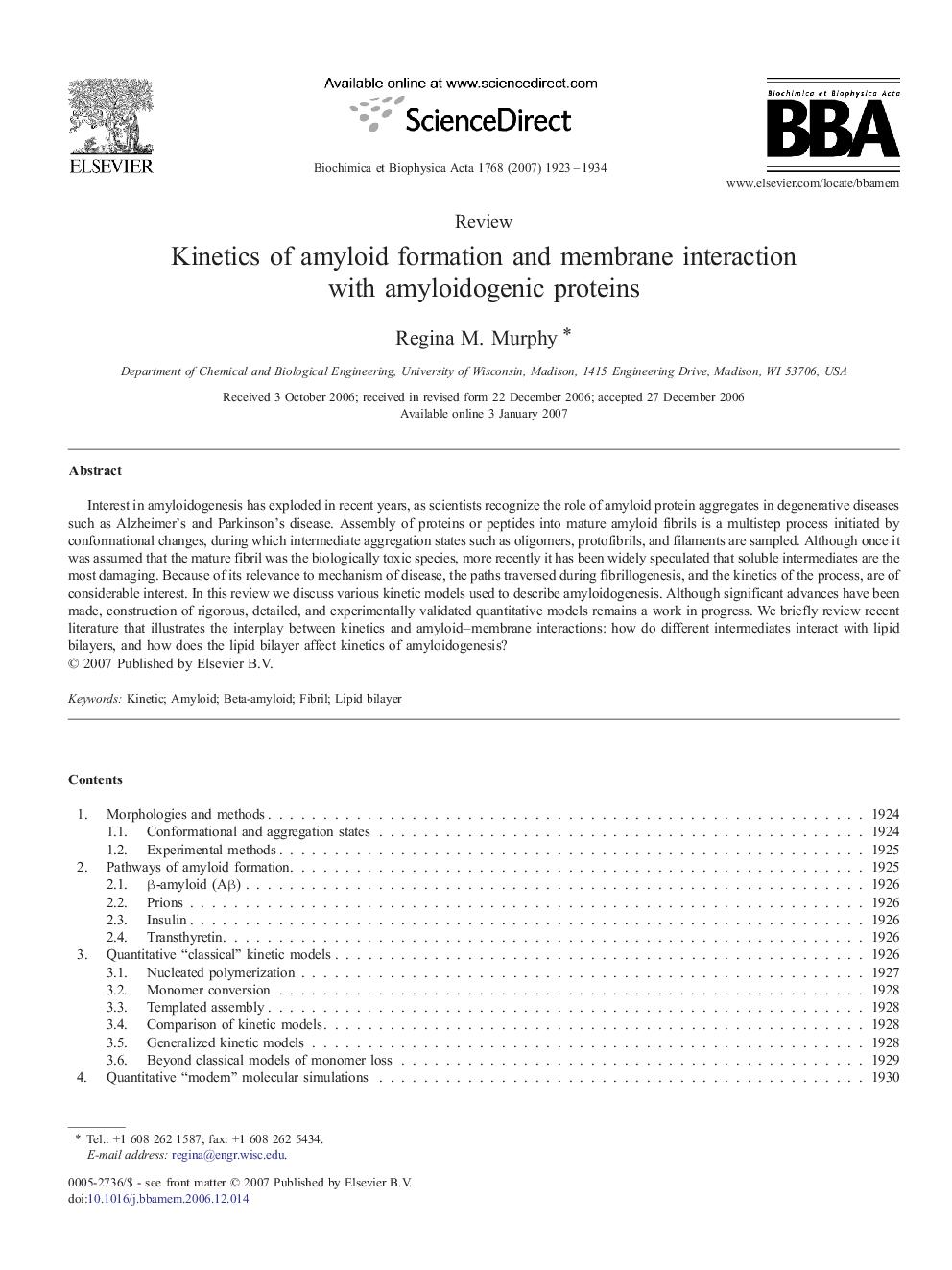| Article ID | Journal | Published Year | Pages | File Type |
|---|---|---|---|---|
| 1945824 | Biochimica et Biophysica Acta (BBA) - Biomembranes | 2007 | 12 Pages |
Interest in amyloidogenesis has exploded in recent years, as scientists recognize the role of amyloid protein aggregates in degenerative diseases such as Alzheimer's and Parkinson's disease. Assembly of proteins or peptides into mature amyloid fibrils is a multistep process initiated by conformational changes, during which intermediate aggregation states such as oligomers, protofibrils, and filaments are sampled. Although once it was assumed that the mature fibril was the biologically toxic species, more recently it has been widely speculated that soluble intermediates are the most damaging. Because of its relevance to mechanism of disease, the paths traversed during fibrillogenesis, and the kinetics of the process, are of considerable interest. In this review we discuss various kinetic models used to describe amyloidogenesis. Although significant advances have been made, construction of rigorous, detailed, and experimentally validated quantitative models remains a work in progress. We briefly review recent literature that illustrates the interplay between kinetics and amyloid–membrane interactions: how do different intermediates interact with lipid bilayers, and how does the lipid bilayer affect kinetics of amyloidogenesis?
